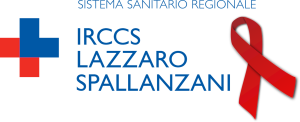eCRFs for the EBONY and the RAINBOW Studies

The EBONY and RAINBOW studies were exemplary demonstrations of Livebase's capabilities in generating applications for electronic Case Report Forms (eCRFs) in clinical research. Both studies were conducted and coordinated in the department of viral immunodeficiencies at the IRCCS 'L.Spallanzani' in Rome. Since only the EBONY study could count on external funding from Gilead Science Inc., the researchers had to find an efficient and inexpensive way to use part of the application to conduct the parallel study (RAINBOW).
Both studies focused primarily on the use of antiretroviral drugs for HIV treatment through custom-tailored applications generated with Livebase, highlighting one of Livebase's standout features: its ability to support multiple applicative views in the same application model. This capability was crucial for the successful execution of the EBONY and RAINBOW studies, allowing researchers to overcome the challenge of conducting parallel research with limited funding by seamlessly leveraging a single model for both studies, thereby significantly reducing costs.

The EBONY study aimed to evaluate the efficacy, safety, and adherence of switching to BIC/FTC/TAF from EFV/TDF/FTC QD and ATAD in virologically suppressed patients, in particular by assessing potential differences between patients switching from daily to alternate dosing. The clinical trial involved the consecutive enrolment of 240 patients divided into 3 subgroups. Each patient had an initial screening and a baseline check-up, and was then followed up over the course of 48 weeks with 4 follow-up visits.
The RAINBOW study aimed to evaluate the feasibility, efficacy, and safety of the rapid ART initiation approach with BIC/FTC/TAF in people with advanced HIV disease, in consideration of their high morbidity and mortality. Although smaller in scale compared to the EBONY study, the RAINBOW study involved a substantial cohort of 116 patients, totaling 540 visits. It also evaluated a range of immunological parameters, safety, feasibility, neurocognitive performances, and other outcomes using patient-reported questionnaires.
Both studies also tracked patient's medical history, DXA bone density imaging, biochemical, immunological and virologic data, adherence to therapy, visits with attached questionnaires, and more.
By leveraging the Livebase platform, a single eCRF application supporting both the above-mentioned studies has been designed, generated and deployed in just 10 days by a single data scientist in November 2020. Each study was supported by a dedicated applicative view customized to suit the specific requirements of that study, and configured with its own set of rules and constraints; for instance, the EBONY view supported three patients sub-groups and a quality of life questionnaire, while the RAINBOW view managed hospitalizations.
In the development of this eCRF application, Livebase allowed the the data scientist to design a unique conceptual data model and then to superimpose (as design layers) a specific applicative view for each study on which he could literally turn-on the parts of the underlying data-model relevant to that study. Furthermore, like any application designed and the generated with Livebase, the EBONY & RAINBOW eCRF is based on a relational DBMS, which allows data scientists to easily query and extract data using the standard and very well-known SQL language.
In conclusion, Livebase empowers researchers by providing a sophisticated yet user-friendly platform that easily handles the complexities of clinical trial data. Its ability to support multiple application views from a single model ensures consistency and flexibility, making it an indispensable tool in clinical research.